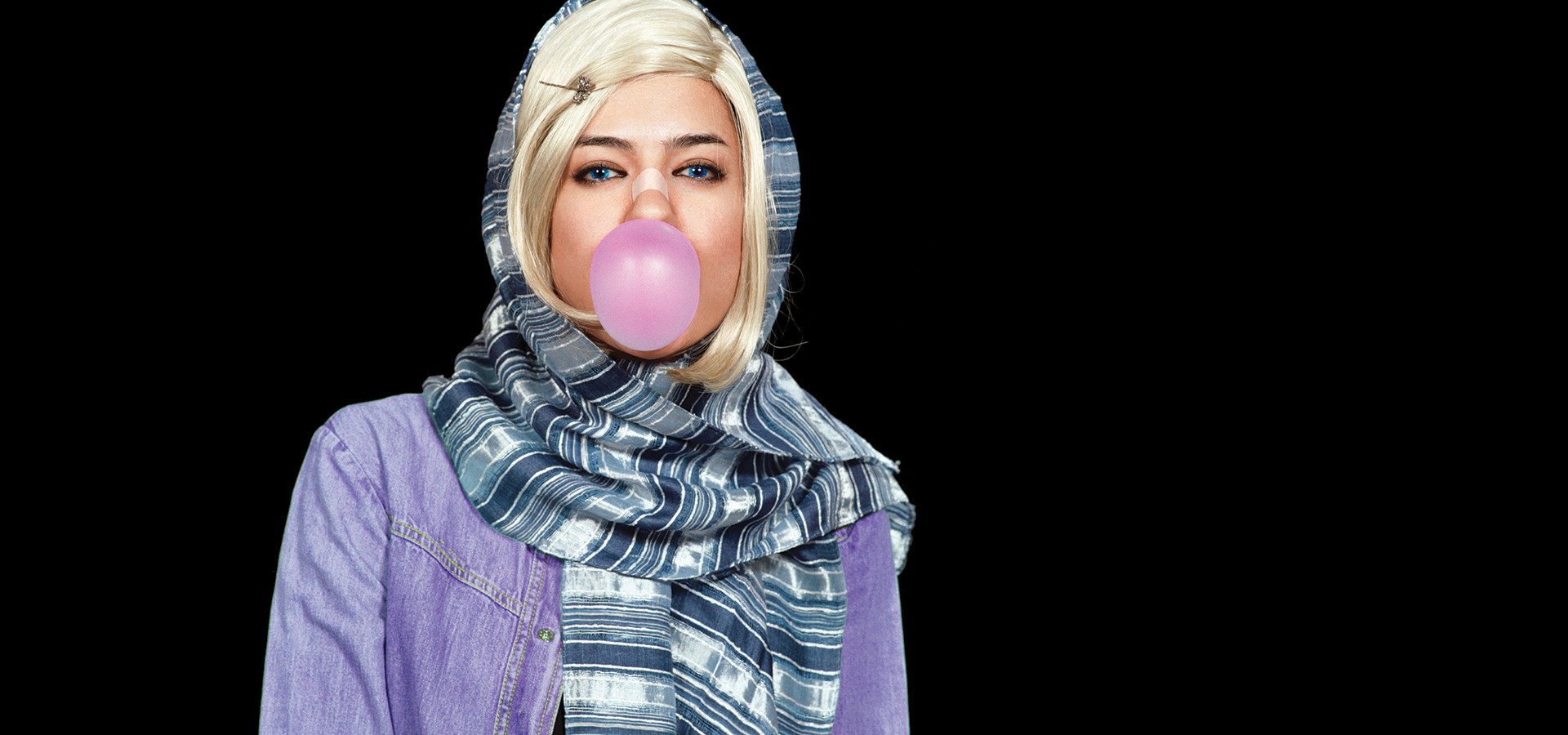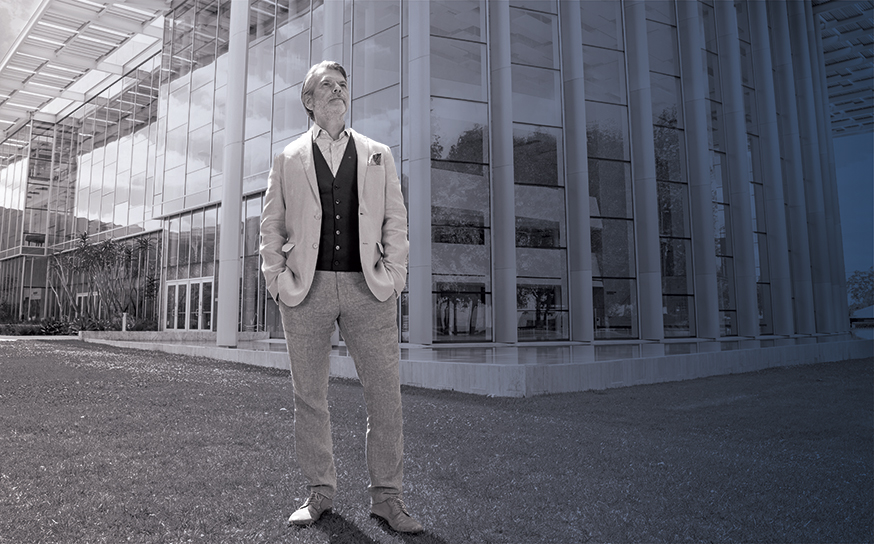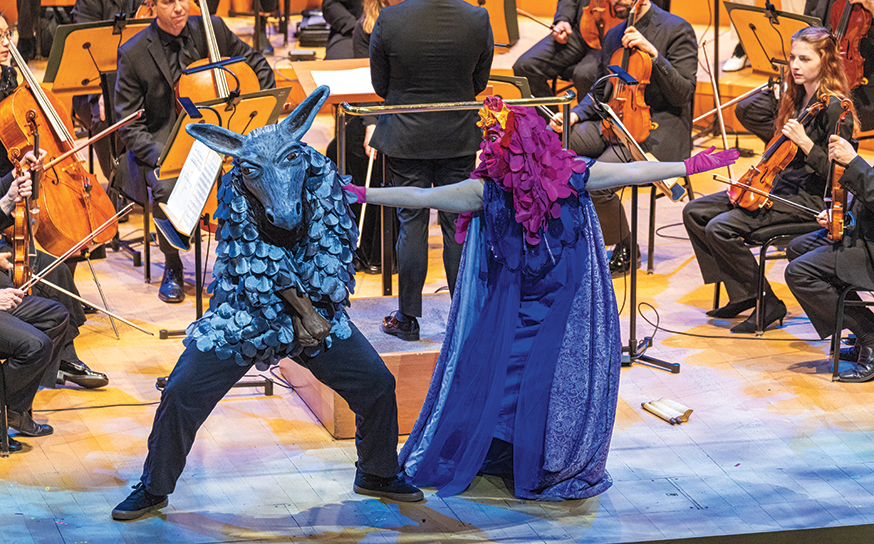Discover Shattering Stereotypies of Middle Eastern Women Is One Goal for This LACMA Exhibit
Riveting images that make you think.
-
CategoryArts
-
Written byDiane Haithman
-
Photos courtesy ofLACMA
The first image one encounters in the Los Angeles County Museum of Art’s current exhibition, Women Defining Women in Contemporary Art of the Middle East and Beyond, is not what one might expect. It is not a woman whose hair is hidden by a veil and whose body is obscured by modest robes. Rather, visitors see a LACMA-commissioned photograph of actor Iman Vellani, who portrays Kamala Khan, the superhero star of the Disney+ miniseries Ms. Marvel. The Kamala character is a Pakistani-American growing up in Jersey City, and is Marvel’s first Muslim protagonist.
The photo, by Lebanese-born artist Rania Matar, shows Iman, a Canadian of Pakistani descent, in a clingy bandage dress and combat boots, her brown hair flowing free, her gaze direct. Linda Kamaroff, LACMA’s curator of Islamic art and head of the museum’s Art of the Middle East department, says the stereotype-busting image perfectly reflects the complex identities of contemporary women artists born or living in what the exhibition broadly defines as Islamic societies.
“I wanted to contradict the common American perception that women in the region are voiceless and invisible,” says Linda, who curated the show. “I want this exhibition to show these women do have voices, and they’re quite visible.”
Adds Linda, “I was also thinking about future generations. I want younger women and girls to see themselves in the art here. They can feel empowered by it.” She added that women outside of the Muslim diaspora will connect with the female struggle for empowerment that transcends language, country and culture.
The exhibition comprises about 75 works by 42 artists, many of which are from LACMA’s permanent collections, as well as newly acquired works. The curator shares another surprising fact: Of LACMA-owned works in its Middle East collection, half are created by women.
The exhibition runs through September 24 at LACMA. For more go to lacma.org.
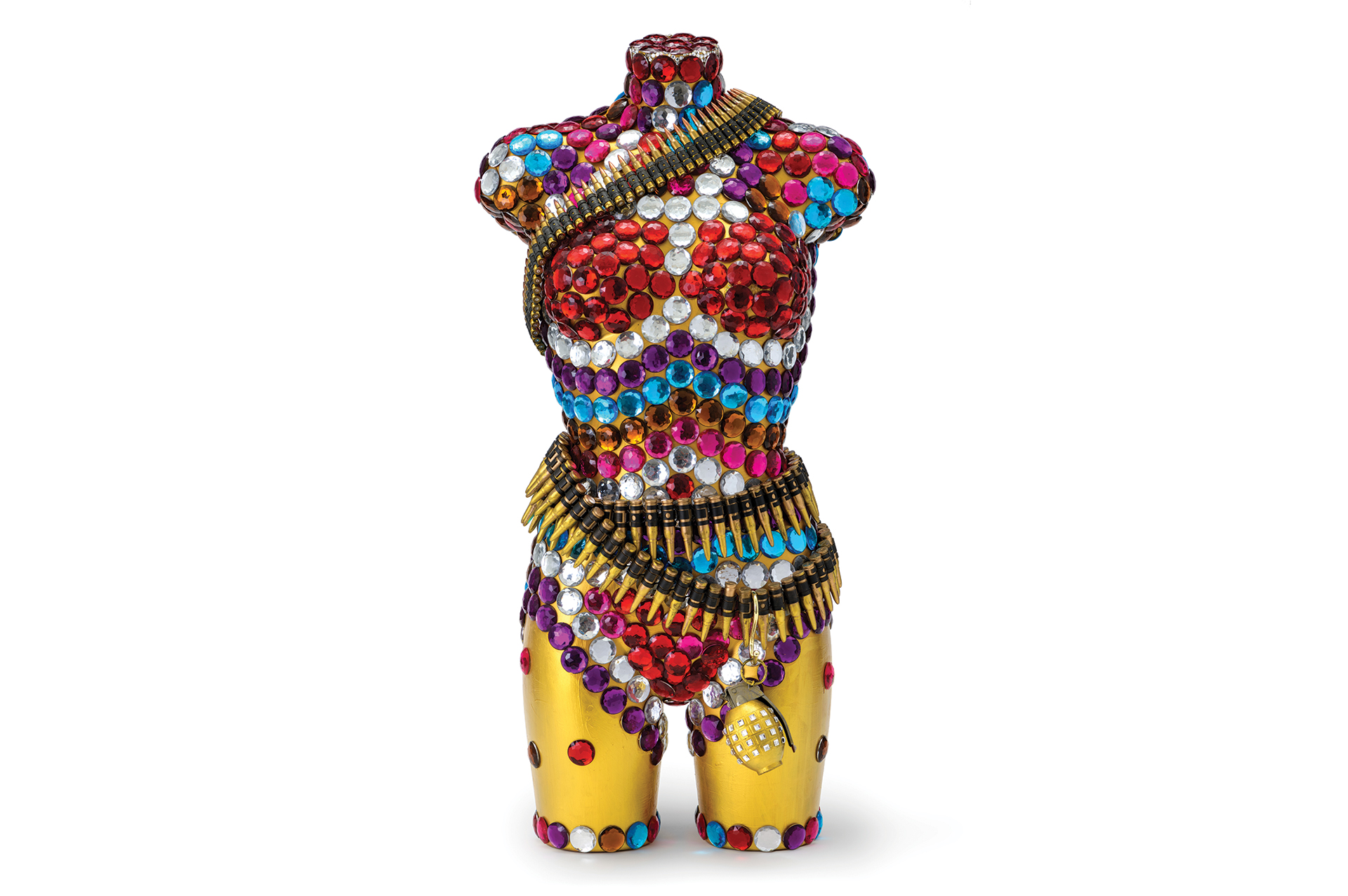
Laila Shawa, Disposable Bodies (Shahrazad #4), 2012
Palestinian artist Laila Shawa died in 2022, but her revolutionary spirit lives on in her multidisciplinary range of work that includes photography, silkscreen prints, sculptures and installations. Her “Disposable Bodies” series, blending glamorous feminine imagery with bullets, grenades and explosives, explores the motivations behind the shahida—the Arabic term for a female suicide bomber—which the artist has said evokes “the troubling confusion of eroticization and weaponization.”
Laila Shawa, Disposable Bodies (Shahrazad #4), 2012, Los Angeles County Museum of Art, gift of the 2022 Collectors Committee with additional funds provided by Arun Bohra & Ashita Shah-Bohra and Afshan A. Lakha, © Laila Shawa, photo © Museum Associates/LACMA
•••
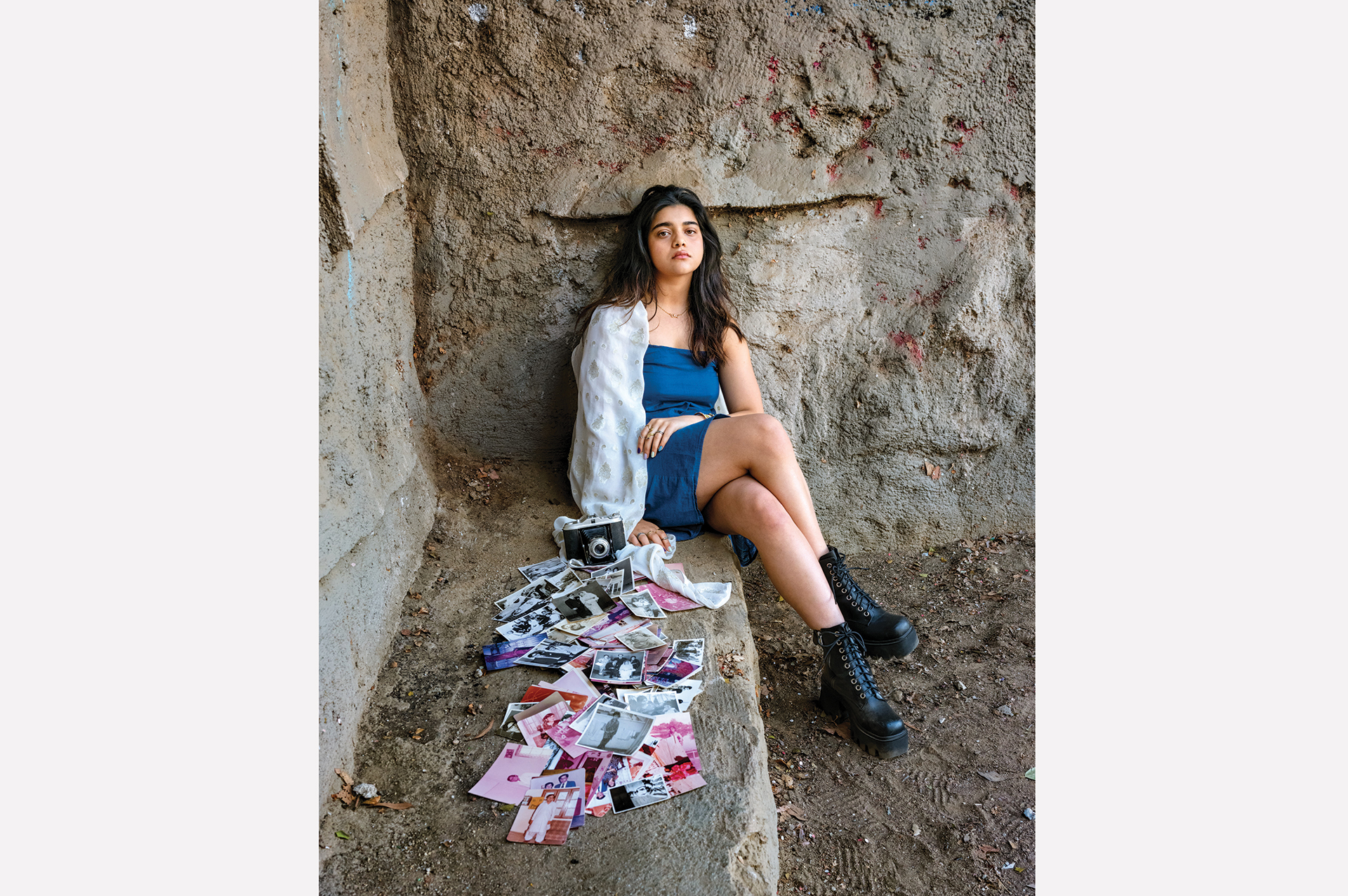
Rania Matar, Iman, Griffith Park, 2022
Rania Matar is known for her photographs of girls and women on the edge of the culture clash between the U.S and Lebanon. The photographer’s focus on youth led LACMA to reach out to her to shoot Iman Vellani. The actor’s motivation for posing is the same as for portraying Ms. Marvel: to be “a living role model, specifically ‘for other brown girls,’” says curator Linda Komaroff.
Rania Matar, Iman, Griffith Park, 2022, Los Angeles County Museum of Art, purchased with funds provided by Willow Bay and Bob Iger, © Rania Matar
•••
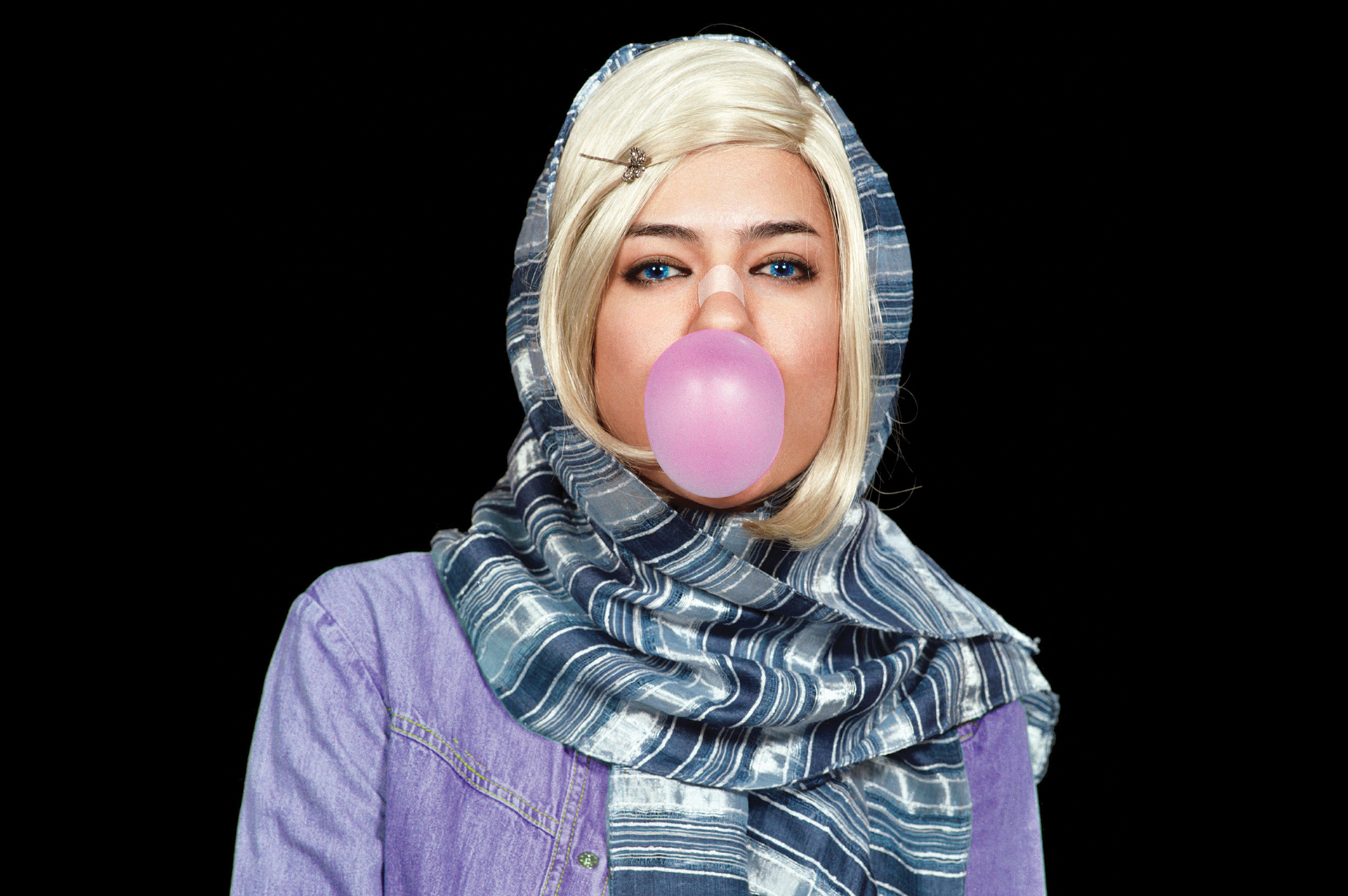
Shirin Aliabadi, Miss Hybrid No. 3, 2008
The “Miss Hybrid” studio portrait series by Iranian photographer Shirin Aliabadi (1973–2018) captures the influence of Western culture on young women in Tehran. This shot contrasts the subject’s modest headscarf with artificial Western beauty standards including blue contact lenses, bleached hair, and a bandage suggesting a recent nose job—popular among Tehran’s youth whether or not they’ve actually had cosmetic surgery—all topped off with a provocative pink bubble of gum.
Shirin Aliabadi, Miss Hybrid No. 3, 2008, Los Angeles County Museum of Art, purchased with funds provided by the Farhat family in loving memory of Shadi Askari-Farhat, © Shirin Aliabadi, courtesy of the artist’S estate and The Third Line, Dubai
•••
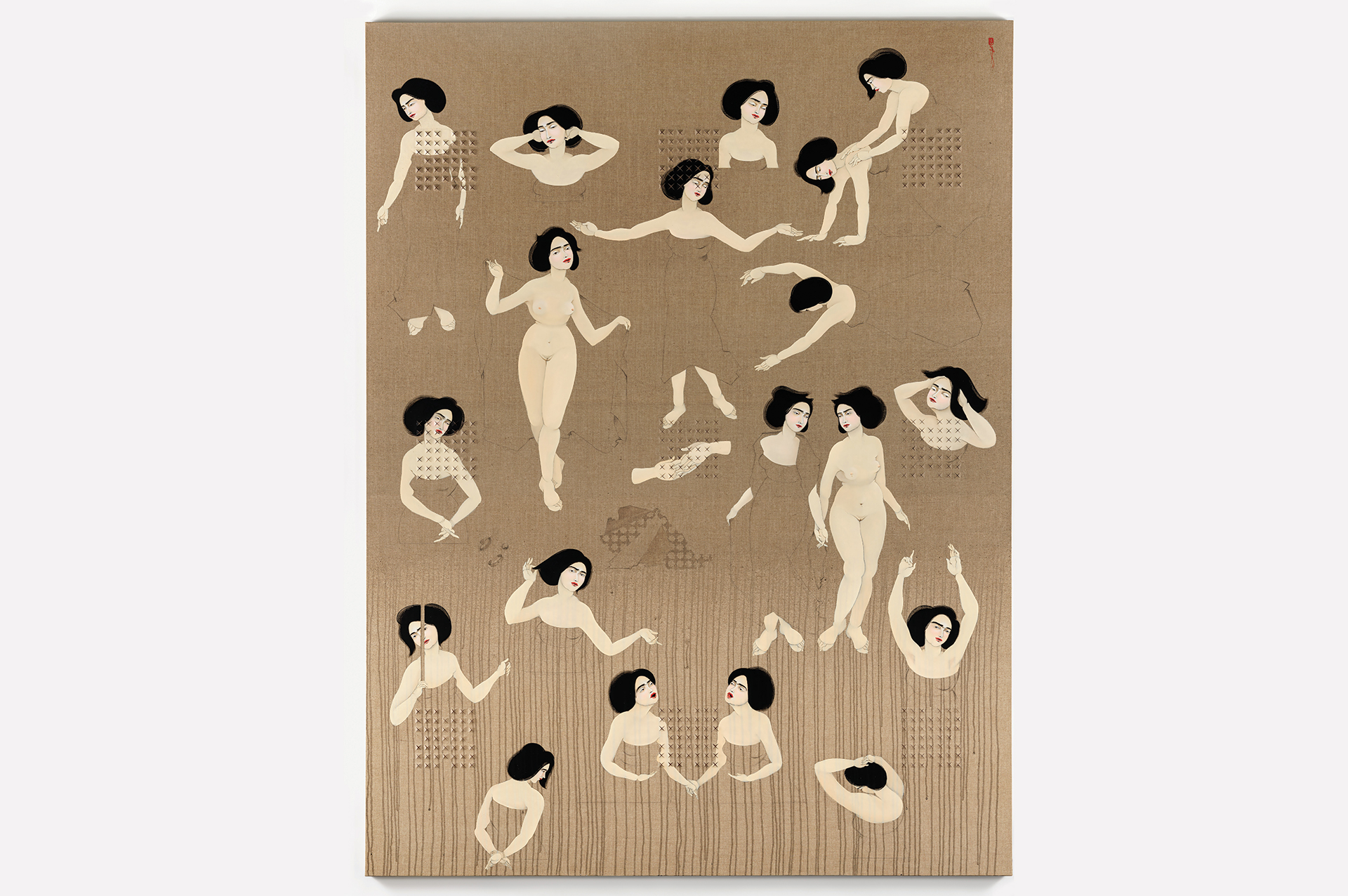
Hayv Kahraman, Search, 2016
Iraqi-born Kurdish artist Hayv Kahraman’s oil-on-linen work Search, subtitled “(Ask one prisoner to come close to translate for another),” fragments the naked female form. In a recorded interview with LACMA, the artist explains that she seeks to blast gendered stereotypes, usually generated by the “white heteronormative man…. Yeah, sometimes we need to scream to be heard. For me, the sense of indignation is what fuels my work.”
Hayv Kahraman, Search, 2016, Los Angeles County Museum of Art, purchased by AHAN: Studio Forum, with additional funds provided by Holly and Albert Baril, 2017 Art Here and Now purchase, © Hayv Kahraman, photo © Museum Associates/LACMA
•••
Join the Valley Community






